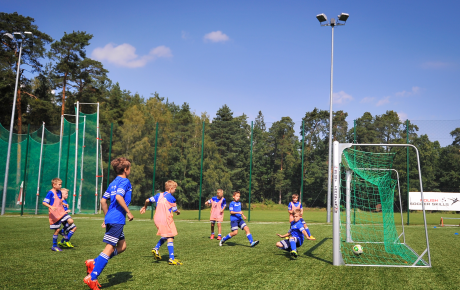Replenishing nutritional reserves, recovery of „damaged muscles”, full rebalancing of water amounts in the body after training, play the key role in the regeneration process. Remember about it especially during the preparation period.

Replenishing nutritional reserves, recovery of „damaged muscles”, full rebalancing of water amounts in the body after training, play the key role in the regeneration process. Remember about it especially during the preparation period.
Training - food preparation
A pre-training meal has a big impact on our organism: it prevents feeling of tiredness and improves comprehensive skills. It should be personalised and adjusted to your organism, and eaten 2-3h before the activity. If training is longer, you can plan an additional snack 1h 45 minutes before the training. The way of preparation plays a significant role here, to know more read: Meals vs training. What should we pay attention to?
1. After-training regeneration
After-training regeneration encompasses few levels, one of which is appropriate delivery of nutrients which have been reduced during training.
Glycogen is one of them, stored in muscles and liver is a source of energy. The amount of muscle glycogen in children bodies is relatively small, but increases with age. That’s why, the food education when it comes to post-training meals should start with the youngest players. Snacks eaten after the activity help quicker regeneration, replenish the losses of glycogen, lower the level of circulating stress hormones, act anti-inflammatory and therefore help to prepare faster for the next meeting/training. The post-training snack should be eaten up to 30-90 minutes after the activity. It should be a source of easily-released carbohydrates in order to replenish the losses of glycogen. Next meal eaten at home should be wholemeal, contain proteins, carbohydrates and veggies.
Read more here: Post-training snack
2. Hydration:
Among young players the most common problem is the state of hydration of the organism before training/match as 50-75% young players come to training DEHYDRATED. Selection of proper amount of liquids is a very individual matter, it relies on the observation of your own organism. There are few ways to check the level of hydration. One of the easiest ones that could be used during our daily activities are: volume and colour of your urine, thirst and body mass. The colour of your urine greatly corresponds with the state of hydration. Straw-coloured urine suggest proper hydration, while yellow can be a sign of dehydration.*Remember, some medication and food can change the colour of urine. People who train, should additionally replenish liquid losses during training. Generally used method to check the amount of liquid loss is called body mass evaluation. It consists in weighing yourself before and after training to later replenish the hydration deficit in an amount of 100-150 % of water or isotonic drink. Replenishing liquids needs to be spread over time. In case of small losses – up to 2 hours, but when the loss is more than few litres – it should last up to 4-5 hours.
Read more here: Organism hydration protocol
3. Sleep:
Insufficient amount of sleep is connected with decrease of resistance, maximum strength and focus. Moreover, it can have a negative influence on immune system. One hour before sleep, put your phone, tablet, laptop down. It’ll improve the quality of sleep. Remember that short sleep or quality-diminished sleep might be “supplemented” by a short 30-minute nap during the day.
4. Breakfast
In some cases, regeneration period lasts up to a few dozen of hours. That’s why, begin the next day with a proper breakfast which will provide the energy for the training and replenish training losses. Moreover, remember that skipping first meal may have negative effects on daily nutrition intake, delivering them in much smaller amounts.
If you have any questions, write to me erwina.szymczyk@soccerskills.pro
dietary consultant PSS Erwina Szymczyk
www.strategiezywienia.pl